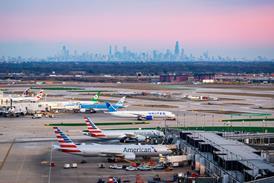Solid-state slab lasers have already evolved to a point of maturity where they could soon be demonstrated on an Air Force Special Operations AC-130 gunship, a US Air Force study finds.
As part of the Air Force Scientific Advisory Board’s (AFSAB) 2016 studies, the board examined fielding a high energy laser on an AFSOC gunship.
The study found there are existing lasers that will fit within the aircraft’s size, weight, power and budget limits, says AFSAB chair Werner Dahm. Although technologies must achieve a technology readiness level 6 to enter into a programme of record, capabilities with a lower TRL are suitable for a near-term demonstration, Dahm says. The laser would also be designed so the technology could be upgraded over the years as the service requires higher power levels.
Fiber lasers have also made progress, but aren’t prime-time ready, according to Dahm.
“They’re getting all the light from the little fibers,” he says. “Putting the light together is not hard. Putting the light together so that all the wavefronts are exactly lined up, that’s a lot of fun to get that to work.”
The study also determined that Lockheed Martin AC-130J’s onboard power generator has enough power to operate a laser that could fire frequent shots. The laser capability would not require new research to develop batteries that could store the energy needed on the platform, Dahm adds. The study determined how many shots the laser could take and that the capability would prove operationally useful, though Dahm could not discuss how many shots AFSOC wants the laser to fire.
AFSOC would fly the laser equipped AC-13OJ the same as it does the legacy system. In a defensive operation, pilots would prosecute their target by banking the aircraft in a lefthand pylon turn and firing down. In place of its 30-millimeter gun mounted on its side, the high energy laser would shoot at surface-to-air missiles or an enemy with a shoulder-launched SAM. AFSOC would contest a variety of targets in an offensive mission, Dahm says.
"On the offensive side, it’s all the sorts of things you can imagine AFSOC is going to encounter when they arrive," he says. "Everything from physical infrastructure to all sorts of other things."
Source: FlightGlobal.com






















